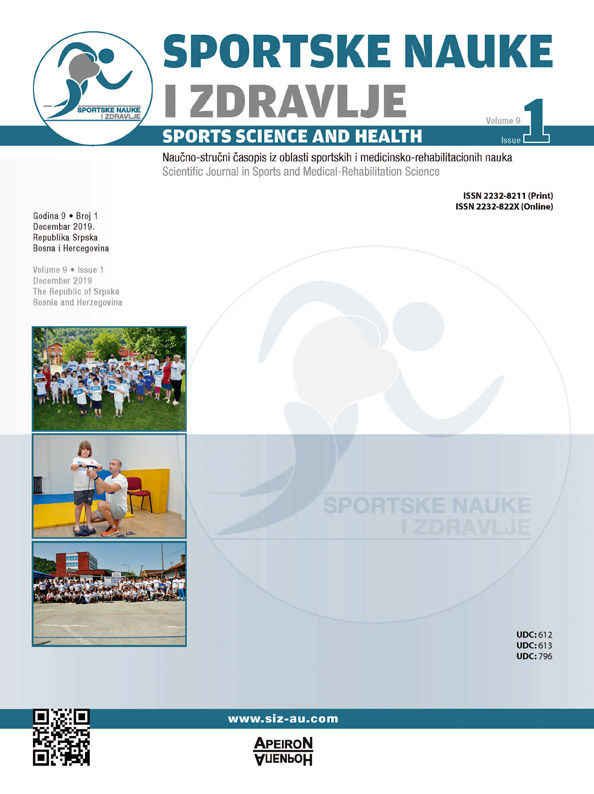Morphological Characteristics as a Predictor of Succesful Results in Cadets Agility Tests in Football / Morfološke karakteristike kao prediktor rezultatske uspješnosti u testovima agilnosti kod kadeta u fudbalu
DOI:
https://doi.org/10.7251/SSH1901038BAbstract
The study was conducted on a sample of 50 cadets for determination of predictive values of selected morphological characteristics in the four agility test resultant performance. In the study, 12 variables were used to evaluate the morphological characteristics defined as predictor (input) set of variables. Criterion variables presented the following agility assessment tests: agility-forward-backward run with rotation (93639OK), 20-yard test (MAG 20Y), 4x5 meters run (AG4X5M), T-test (MAG T). For the determination of the predictive values of the selected morphological characteristics on the successful result in the agility assessment tests, four multiple regression analyses were applied to each test. The results of regression analysis show that the morphological characteristics observed in this study are relatively poorly correlated with the results in the cadet’s agility evaluation. Statistically significant regression correlation was obtained between selected morphological characteristics and the 4 x 5 meters run with a change of direction at 900 and 1800 (AG4X5M). There was no statistically significant correlation in the other agility test estimation and the selected morphological characteristics although the partial association of some morphological characteristics was noticed. The results obtained may be of benefit to coaches and other professionals working with younger age categories in football as guidance for more useful planning and programming of training work, as well in the choice of appropriate training methods.Downloads
Published
2019-07-12
Issue
Section
Чланци
